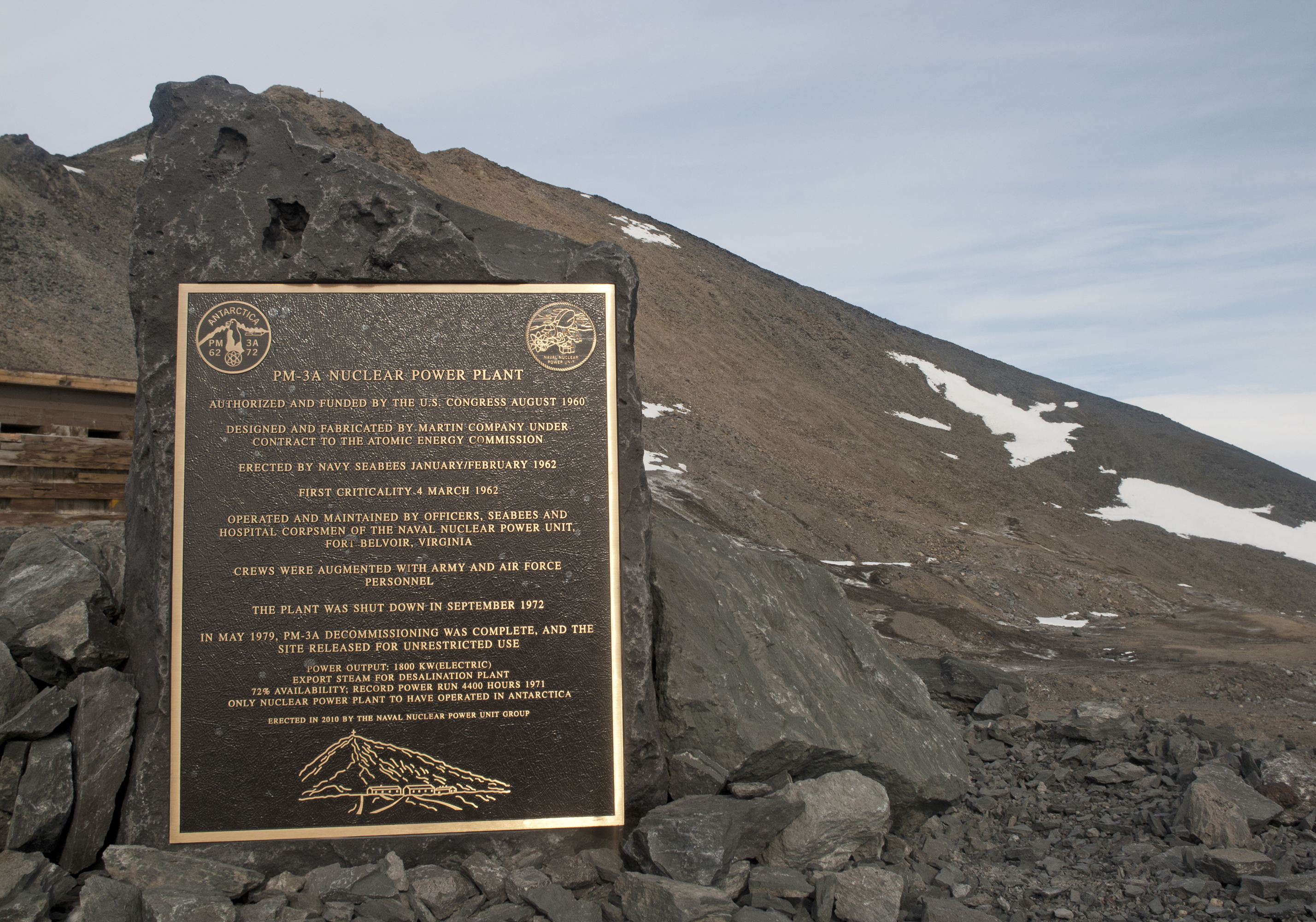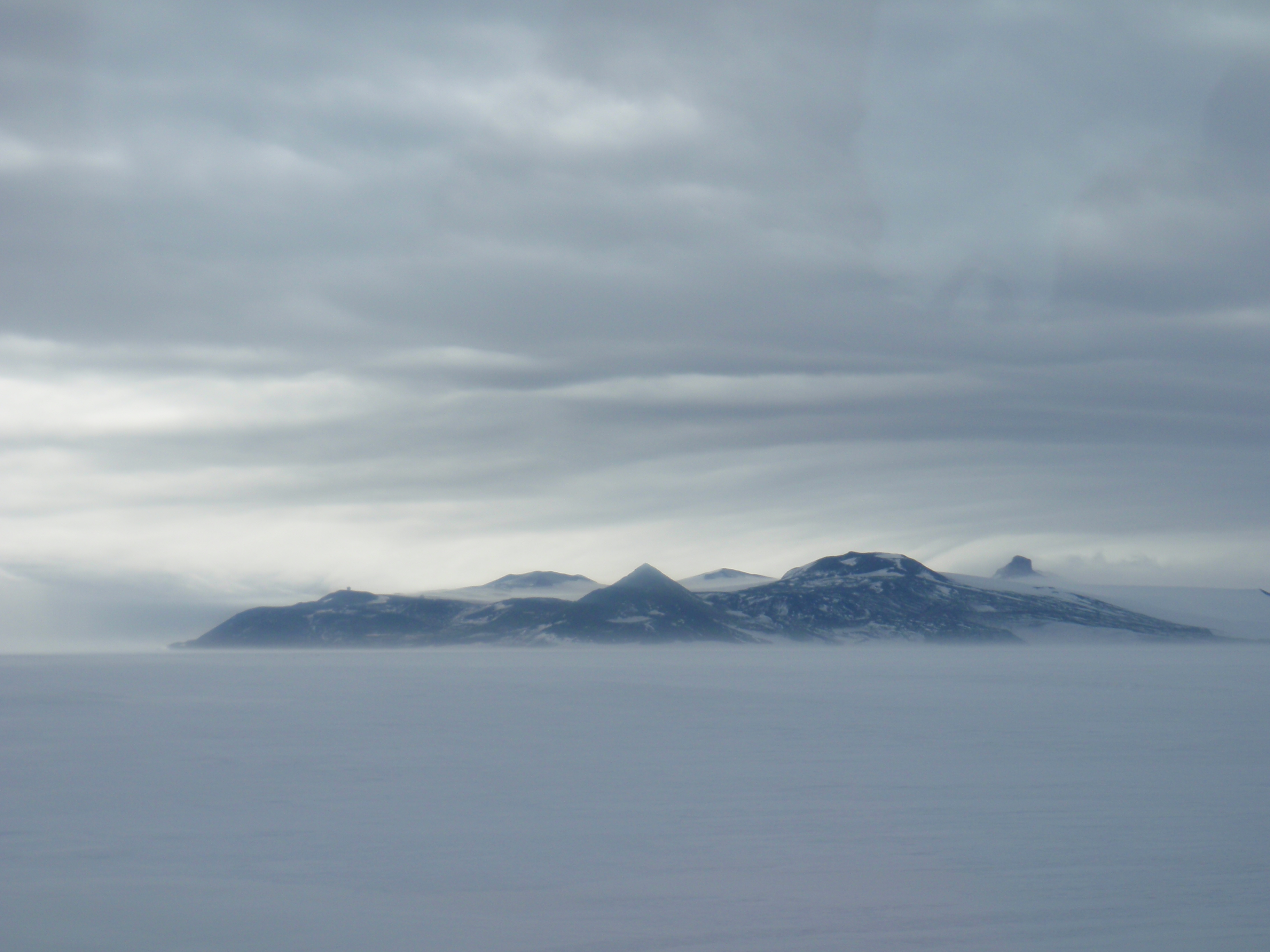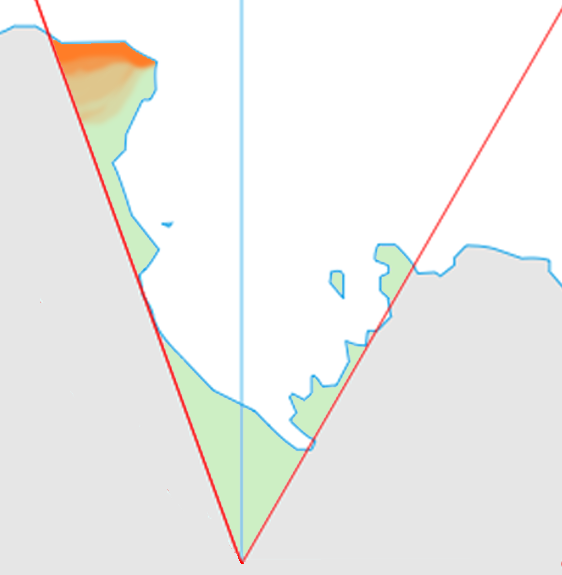|
Griffith Ridge
Griffith Ridge () is a rock ridge long in the Bowers Mountains of Victoria Land, Antarctica, located just within the mouth of Champness Glacier, where the latter joins the larger Lillie Glacier. This geographical feature was first mapped by the United States Geological Survey from surveys and U.S. Navy air photos, 1960–62, and was named by the Advisory Committee on Antarctic Names for Lieutenant Harry G. Griffith, U.S. Navy, public works officer at McMurdo Station, Hut Point Peninsula, Ross Island, 1967. This ridge lies situated on the Pennell Coast, a portion of Antarctica lying between Cape Williams and Cape Adare Cape Adare is a prominent cape of black basalt forming the northern tip of the Adare Peninsula and the north-easternmost extremity of Victoria Land, East Antarctica. Description Marking the north end of Borchgrevink Coast and the west e .... References Ridges of Victoria Land Pennell Coast {{VictoriaLand-geo-stub ... [...More Info...] [...Related Items...] OR: [Wikipedia] [Google] [Baidu] |
Bowers Mountains
__NOTOC__ Bowers Mountains () is a group of north–south trending mountains in Antarctica, about 145 km (90 mi) long and 56 km (35 mi) wide, bounded by the coast on the north and by the Rennick, Canham, Black and Lillie glaciers in other quadrants. The seaward end was first sighted in February 1911 from the ''Terra Nova'', under Lt. Harry L.L. Pennell, RN, and was subsequently named "Bowers Hills" in honour of Henry Robertson Bowers who perished with Captain Robert Falcon Scott on their return from the South Pole in 1912. The mountain range is one of the most extensive topographical features within Victoria Land. The feature was photographed from U.S. Navy aircraft in 1946-47 and 1960–62, and was surveyed and mapped by the United States Geological Survey (USGS) in 1962–63. The name was amended to Bowers Mountains upon USGS mapping which showed the group to be a major one with peaks rising to nearly 2,600 metres. The major topographical feature lies si ... [...More Info...] [...Related Items...] OR: [Wikipedia] [Google] [Baidu] |
Victoria Land
Victoria Land is a region in eastern Antarctica which fronts the western side of the Ross Sea and the Ross Ice Shelf, extending southward from about 70°30'S to 78°00'S, and westward from the Ross Sea to the edge of the Antarctic Plateau. It was discovered by Captain James Clark Ross in January 1841 and named after Queen Victoria. The rocky promontory of Minna Bluff is often regarded as the southernmost point of Victoria Land, and separates the Scott Coast to the north from the Hillary Coast of the Ross Dependency to the south. The region includes ranges of the Transantarctic Mountains and the McMurdo Dry Valleys (the highest point being Mount Abbott in the Northern Foothills), and the flatlands known as the Labyrinth. The Mount Melbourne is an active volcano in Victoria Land. Early explorers of Victoria Land include James Clark Ross and Douglas Mawson. In 1979, scientists discovered a group of 309 meteorites A meteorite is a solid piece of debris from an ... [...More Info...] [...Related Items...] OR: [Wikipedia] [Google] [Baidu] |
Antarctica
Antarctica () is Earth's southernmost and least-populated continent. Situated almost entirely south of the Antarctic Circle and surrounded by the Southern Ocean, it contains the geographic South Pole. Antarctica is the fifth-largest continent, being about 40% larger than Europe, and has an area of . Most of Antarctica is covered by the Antarctic ice sheet, with an average thickness of . Antarctica is, on average, the coldest, driest, and windiest of the continents, and it has the highest average elevation. It is mainly a polar desert, with annual precipitation of over along the coast and far less inland. About 70% of the world's freshwater reserves are frozen in Antarctica, which, if melted, would raise global sea levels by almost . Antarctica holds the record for the lowest measured temperature on Earth, . The coastal regions can reach temperatures over in summer. Native species of animals include mites, nematodes, penguins, seals and tardigrades. Where ve ... [...More Info...] [...Related Items...] OR: [Wikipedia] [Google] [Baidu] |
Champness Glacier
Champness Glacier () is a tributary glacier, long, draining northeast from the vicinity of Ian Peak in the Bowers Mountains and entering Lillie Glacier at Griffith Ridge, Victoria Land, Antarctica. The glacier was so named by the New Zealand Geological Survey Antarctic Expedition to northern Victoria Land, 1967–68, for G.R. Champness, field assistant with that party. The glacier lies situated on the Pennell Coast, a portion of Antarctica lying between Cape Williams Cape Williams () is an ice-covered cape in Antarctica. It is the termination of Buell Peninsula at the east side of the terminus of Lillie Glacier at the lower ends of George Glacier and Zykov Glacier. The peninsula is 15 nautical miles (28 ... and Cape Adare. References Glaciers of Pennell Coast 1967 in Antarctica 1968 in Antarctica {{PennellCoast-glacier-stub ... [...More Info...] [...Related Items...] OR: [Wikipedia] [Google] [Baidu] |
Lillie Glacier
Lillie Glacier () is a large glacier in Antarctica, about long and wide. It lies between the Bowers Mountains on the west and the Concord Mountains and Anare Mountains on the east, flowing to Ob' Bay on the coast and forming the Lillie Glacier Tongue. The glacier tongue (), the prominent seaward extension of the glacier into Ob' Bay, was discovered by the British Antarctic Expedition, 1910–13, when the '' Terra Nova'' explored westward of Cape North in February 1911. It was named by the expedition for Dennis G. Lillie, a biologist on the ''Terra Nova''. The name Lillie has since been extended to the entire glacier. The lower half of the glacier was plotted by the Australian National Antarctic Research Expedition ('' Thala Dan'') in 1962, which explored the area and utilized air photos taken by U.S. Navy Operation Highjump, 1946–47. The whole feature was mapped by the United States Geological Survey from surveys and U.S. Navy air photos, 1960–62. See also * List of gla ... [...More Info...] [...Related Items...] OR: [Wikipedia] [Google] [Baidu] |
United States Geological Survey
The United States Geological Survey (USGS), formerly simply known as the Geological Survey, is a scientific agency of the United States government. The scientists of the USGS study the landscape of the United States, its natural resources, and the natural hazards that threaten it. The organization's work spans the disciplines of biology, geography, geology, and hydrology. The USGS is a fact-finding research organization with no regulatory responsibility. The agency was founded on March 3, 1879. The USGS is a bureau of the United States Department of the Interior; it is that department's sole scientific agency. The USGS employs approximately 8,670 people and is headquartered in Reston, Virginia. The USGS also has major offices near Lakewood, Colorado, at the Denver Federal Center, and Menlo Park, California. The current motto of the USGS, in use since August 1997, is "science for a changing world". The agency's previous slogan, adopted on the occasion of its hundredth an ... [...More Info...] [...Related Items...] OR: [Wikipedia] [Google] [Baidu] |
Advisory Committee On Antarctic Names
The Advisory Committee on Antarctic Names (ACAN or US-ACAN) is an advisory committee of the United States Board on Geographic Names responsible for recommending commemorative names for features in Antarctica. History The committee was established in 1943 as the Special Committee on Antarctic Names (SCAN). It became the Advisory Committee on Antarctic Names in 1947. Fred G. Alberts was Secretary of the Committee from 1949 to 1980. By 1959, a structured nomenclature was reached, allowing for further exploration, structured mapping of the region and a unique naming system. A 1990 ACAN gazeeter of Antarctica listed 16,000 names. Description The United States does not recognise territorial boundaries within Antarctica, so ACAN assigns names to features anywhere within the continent, in consultation with other national nomenclature bodies where appropriate, as defined by the Antarctic Treaty System. The research and staff support for the ACAN is provided by the United States Geolog ... [...More Info...] [...Related Items...] OR: [Wikipedia] [Google] [Baidu] |
Harry G
Harry may refer to: TV shows * ''Harry'' (American TV series), a 1987 American comedy series starring Alan Arkin * ''Harry'' (British TV series), a 1993 BBC drama that ran for two seasons * ''Harry'' (talk show), a 2016 American daytime talk show hosted by Harry Connick Jr. People and fictional characters *Harry (given name), a list of people and fictional characters with the given name *Harry (surname), a list of people with the surname *Dirty Harry (musician) (born 1982), British rock singer who has also used the stage name Harry *Harry Potter (character), the main protagonist in a Harry Potter fictional series by J. K. Rowling Other uses *Harry (derogatory term), derogatory term used in Norway * ''Harry'' (album), a 1969 album by Harry Nilsson *The tunnel used in the Stalag Luft III escape , partof = ''Luftwaffe'' , location = Sagan, Lower Silesia, Nazi Germany (now Żagań, Poland) , image = , caption = Model of the set used to film the movie ''The Great Escape.'' I ... [...More Info...] [...Related Items...] OR: [Wikipedia] [Google] [Baidu] |
McMurdo Station
McMurdo Station is a United States Antarctic research station on the south tip of Ross Island, which is in the New Zealand-claimed Ross Dependency on the shore of McMurdo Sound in Antarctica. It is operated by the United States through the United States Antarctic Program (USAP), a branch of the National Science Foundation. The station is the largest community in Antarctica, capable of supporting up to 1,258 residents, and serves as one of three year-round United States Antarctic science facilities. All personnel and cargo going to or coming from Amundsen–Scott South Pole Station first pass through McMurdo. By road, McMurdo is 3 kilometres (1.9 mi) from New Zealand's smaller Scott Base. History The station takes its name from its geographic location on McMurdo Sound, named after Lieutenant Archibald McMurdo of . The ''Terror'', commanded by Irish explorer Francis Crozier, along with expedition flagship ''Erebus'' under command of James Clark Ross, first charted the a ... [...More Info...] [...Related Items...] OR: [Wikipedia] [Google] [Baidu] |
Hut Point Peninsula
Hut Point Peninsula () is a long, narrow peninsula from wide and long, projecting south-west from the slopes of Mount Erebus on Ross Island, Antarctica. McMurdo Station (US) and Scott Base (NZ) are Antarctic research stations located on the Hut Point Peninsula. History The British National Antarctic Expedition (1901–04) under Robert Falcon Scott built its hut on Hut Point, a small point lying north-east of Cape Armitage, the southern headland of the peninsula. Members of the British Antarctic Expedition, 1910–13 (BAE), under Scott, wintering on Cape Evans and often using the hut during their journeys, came to refer to the whole peninsula as the Hut Point Peninsula. Stonehouse, Bernard. ''Encyclopedia of Antarctica and the Southern Oceans'', John Wiley and Sons, 2002. Historic sites and monuments Several features on Hut Point, including the cross memorial for George Vince and the store hut for the Scott expeditions, are protected under the Antarctic Treaty. Both t ... [...More Info...] [...Related Items...] OR: [Wikipedia] [Google] [Baidu] |
Ross Island
Ross Island is an island formed by four volcanoes in the Ross Sea near the continent of Antarctica, off the coast of Victoria Land in McMurdo Sound. Ross Island lies within the boundaries of Ross Dependency, an area of Antarctica claimed by New Zealand. History Discovery Sir James Ross discovered it in 1840, and it was later named in honour of him by Robert F. Scott. Ross Island was the base for many of the early expeditions to Antarctica. It is the southernmost island reachable by sea. Huts built by Scott's and Shackleton's expeditions are still standing on the island, preserved as historical sites. Today Ross Island is home to New Zealand's Scott Base, and the largest Antarctic settlement, the U.S. Antarctic Program's McMurdo Station. Greenpeace established World Park Base on the island and ran it for five years, from 1987 to 1992. Geography Because of the persistent presence of the ice sheet, the island is sometimes taken to be part of the Antarctic mainland. I ... [...More Info...] [...Related Items...] OR: [Wikipedia] [Google] [Baidu] |
Pennell Coast
Pennell Coast is that portion of the coast of Antarctica between Cape Williams and Cape Adare. To the west of Cape Williams lies Oates Coast, and to the east and south of Cape Adare lies Borchgrevink Coast. Named by New Zealand Antarctic Place-Names Committee (NZ-APC) in 1961 after Lieutenant Harry Pennell, Royal Navy, commander of the Terra Nova, the expedition ship of the British Antarctic Expedition, 1910–13. Pennell engaged in oceanographic work in the Ross Sea during this period. In February 1911 he sailed along this coast in exploration and an endeavor to land the Northern Party led by Lieutenant Victor Campbell. The name is also used more loosely to refer to both the coast itself and the hinterland extending south to the watershed of the Southern Cross Mountains Southern Cross Mountains is the name applied to the group of Antarctic mountain ranges lying between the Mariner and Priestley Glaciers in Victoria Land. Seaward parts of this area were first viewed b ... [...More Info...] [...Related Items...] OR: [Wikipedia] [Google] [Baidu] |







